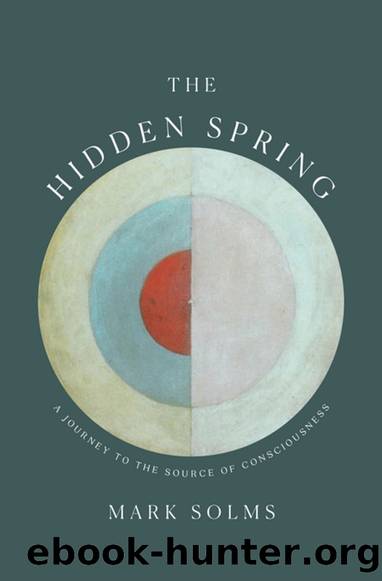The Hidden Spring: A Journey to the Source of Consciousness by Mark Solms

Author:Mark Solms [Solms, Mark]
Language: eng
Format: epub
ISBN: 9780393542028
Barnesnoble:
Published: 2020-12-31T00:00:00+00:00
Figure 18 (a) = the Rey Complex Figure as shown to Patient WB; (b) = the same figure as copied by him; (c) = the figure as drawn by him from memory. These drawings provide objective evidence of the inversion of WBâs predictive model of the world. The Rey Complex Figure is difficult to reproduce at the best of times; why would this seriously ill patient compound the difficulty by drawing it upside down?
In other words, her visual cortex receives the sort of information that we all do, but she cannot generalise from the noisy sensory signals and automatically infer the stable objects they stand for (e.g. recognise a familiar face). She has suffered these anomalies all her life, and has developed elaborate ways of compensating for them. Since her visual âassociationâ cortex does not automatically integrate the two visual fields and rotate the scene, she adjusts her representation of the world by making deliberate inferences. For example, when I asked her to identify the location of a well-known city on an unmarked map, she said: âShould I show you where I sense it is located or where I know it is?â When she âsensesâ that something is located in the west, she âknowsâ it must be located in the east.
Rather than appealing to such rare neuropsychological disorders, however, let me illustrate the self-generated nature of perception by way of the phenomenon that is conventionally used for this purpose, namely binocular rivalry.
This phenomenon was first described in 1593; and it featured prominently in Helmholtzâs seminal work on the topic of unconscious inference.8 It involves simultaneous presentation of different pictures to each eye, using a mirror stereoscope. Letâs say the left eye is presented with a face and the right one a house. Under these artificial conditions, visual experience unfolds in a âbi-stableâ manner, whereby you do not see a superimposed blend of the two images but rather an alternation between them. You see a house then a face then a house then a face, rather than a combined house-face. This clearly demonstrates the distinction between the objective signal that is transmitted to the brain and the subjective percept that is generated by it. Helmholtz concluded: âIn such cases the interpretation [of the visual signal] vacillates such that the observer has different experiences, one after another, for the unchanging retinal image.â9 As with colour vision, therefore, what you experience is an inference about the sensory input, not the input itself.
Broadly similar things happen in everyday life, such as when I âsawâ my British friend Teresa at Cape Town airport. All these illusions show that what you perceive is generated largely by your expectations. In Bayesian terms, binocular rivalry is taken to show that if the prior hypothesis that best fits the sensory data (the high likelihood that you are seeing a house-face) does not square with your background knowledge (the low probability that house-faces exist) then the hypothesis is rejected. The inference that youâre seeing a house trumps the one that youâre seeing a house-face; so, a house is what you experience.
Download
This site does not store any files on its server. We only index and link to content provided by other sites. Please contact the content providers to delete copyright contents if any and email us, we'll remove relevant links or contents immediately.
Rewire Your Anxious Brain by Catherine M. Pittman(18208)
Talking to Strangers by Malcolm Gladwell(12787)
The Art of Thinking Clearly by Rolf Dobelli(9804)
Mindhunter: Inside the FBI's Elite Serial Crime Unit by John E. Douglas & Mark Olshaker(8643)
Becoming Supernatural by Dr. Joe Dispenza(7786)
Change Your Questions, Change Your Life by Marilee Adams(7317)
The Road Less Traveled by M. Scott Peck(7228)
Nudge - Improving Decisions about Health, Wealth, and Happiness by Thaler Sunstein(7185)
The Lost Art of Listening by Michael P. Nichols(7096)
Mastermind: How to Think Like Sherlock Holmes by Maria Konnikova(6893)
Enlightenment Now: The Case for Reason, Science, Humanism, and Progress by Steven Pinker(6842)
Win Bigly by Scott Adams(6784)
The Way of Zen by Alan W. Watts(6252)
Daring Greatly by Brene Brown(6188)
Big Magic: Creative Living Beyond Fear by Elizabeth Gilbert(5299)
Grit by Angela Duckworth(5260)
Men In Love by Nancy Friday(4928)
Ego Is the Enemy by Ryan Holiday(4885)
Altered Sensations by David Pantalony(4829)
